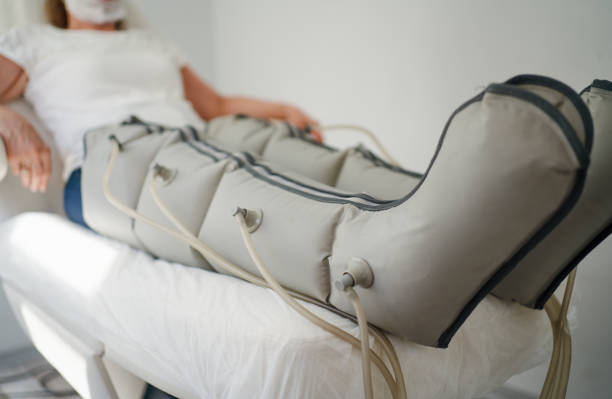Introduction
Modern healthcare encompasses a wide range of therapeutic techniques aimed at improving patient outcomes. Among these, Compression therapy, percussion therapy, and the distinction between physical vs occupational therapy play significant roles. This article explores these therapies in depth, highlighting their applications and benefits.
Compression Therapy: Enhancing Circulation
Compression therapy involves the use of pressure garments to support veins and increase blood flow. Commonly used for conditions like varicose veins and lymphedema, compression therapy helps in managing chronic pain and swelling. The application of consistent pressure prevents blood pooling, promotes lymphatic drainage, and reduces discomfort.
Patients wearing compression garments often notice an improvement in mobility and a decrease in symptom severity, which contributes to better overall health. This non-invasive therapy is also beneficial post-surgery to prevent complications such as deep vein thrombosis (DVT).
Percussion Therapy: Accelerating Muscle Recovery
percussion therapy uses mechanical devices to deliver rapid, percussive strokes to muscles. This form of therapy is ideal for muscle recovery, pain relief, and enhancing muscle performance. Athletes and individuals with physically demanding lifestyles benefit significantly from percussion therapy.
The deep tissue stimulation provided by percussion therapy aids in breaking down scar tissue, increasing blood flow, and promoting the healing of soft tissues. Devices like massage guns are popular tools for personal and professional use, making this therapy accessible to a broader audience.
Physical vs Occupational Therapy: Tailored Rehabilitation
The debate of physical vs occupational therapy often arises in rehabilitation settings. Physical therapy focuses on restoring physical function through exercises, stretches, and manual therapy. It is essential for patients recovering from injuries, surgeries, or dealing with chronic pain conditions.
Occupational therapy, however, is centered around helping patients perform daily activities. This might involve adapting the home environment, teaching new techniques for routine tasks, or using adaptive equipment. OT is especially beneficial for individuals with disabilities, mental health issues, or those recovering from severe illnesses.
Integrating Multiple Therapies for Holistic Care
A synergistic approach often involves combining compression therapy and percussion therapy. For instance, an individual with a sports injury might use compression garments to manage swelling while employing percussion therapy to ease muscle stiffness and expedite recovery.
Similarly, a comprehensive rehabilitation plan might incorporate both physical and occupational therapy. A patient with a spinal cord injury could benefit from PT to strengthen muscles and improve mobility, while OT helps them adapt to new ways of performing daily tasks, ensuring a smoother transition to independence.
Practical Outcomes and Case Studies
Compression therapy has proven effective for patients with venous disorders. Regular use of compression stockings can significantly reduce symptoms, enhance mobility, and prevent further complications.
Athletes incorporating percussion therapy into their routines often experience faster recovery times and improved performance. This therapy is also advantageous for people experiencing chronic muscle pain or stiffness, providing a non-invasive, drug-free solution.
The complementary roles of physical vs occupational therapy are evident in cases like stroke rehabilitation. Physical therapy helps regain strength and movement, while occupational therapy focuses on enabling patients to manage daily activities independently, thus covering both physical and functional recovery aspects.
Conclusion
Exploring various therapies, including compression therapy, percussion therapy, and understanding the nuances of physical vs occupational therapy, highlights the importance of tailored therapeutic approaches in healthcare. These therapies address different needs and conditions, often working best in combination to provide holistic patient care. By leveraging these therapies effectively, healthcare providers can ensure optimal recovery and improved quality of life for their patients.





